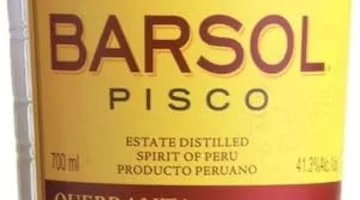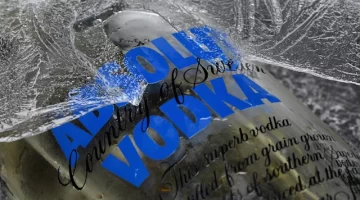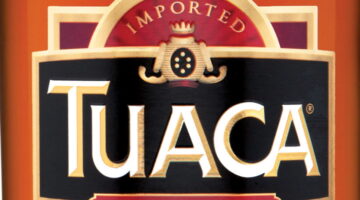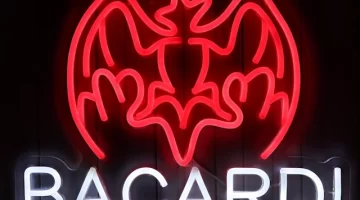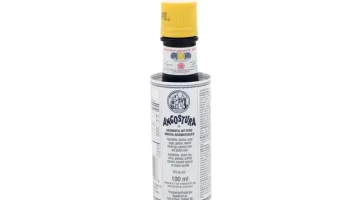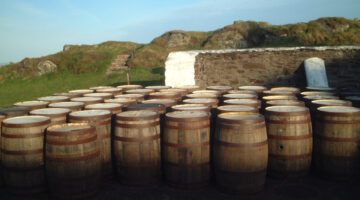Touring the Metaxa Distillery
Touring the Metaxa Distillery, a behind the scenes look at the House of Metaxa in Athens from Travel Distilled.

I was recently lucky enough to visit Athens and tour the Metaxa distillery. I’d already discovered how some of the city’s creative mixologists were using Metaxa to make amazing cocktails. I’d also been to Samos where Metaxa gets its grapes from, and while there toured the excellent Museum of Samos Wine. Now at last it was time to see where and how Metaxa is made.
Touring the Metaxa Distillery
The Metaxa distillery is in the affluent suburb of Kifissia, in the north of Athens. Before you jump on the metro, though, be warned that the distillery isn’t open for tours by the public, only for invited guests. Nevertheless, I thought readers would be interested in a behind-the-scenes look at The Hose of Metaxa.

History of Metaxa
Before we tour the Metaxa distillery, our guide gives us some background history.
‘In 1888,’ she tells us, ‘Spiros Metaxa established the company. The word Metaxi means silk in Greek so the family somewhere along the way was involved in the trading of silk, and it’s a suitable name for someone who wanted to create a silky smooth drink.’

‘He built the first distillery in the Athens port of Piraeus, by choice, for trading reasons. This new distillery in Kifissia was built in 1968. The company ceased being a family business when it was sold in 1989 and it is now owned by Remy Cointreau, though two of the founder’s grandsons are still alive.’

The Symbol of Metaxa
The symbol of Metaxa is the Salamina Warrior, seen on every bottle. While digging the foundations of the original distillery in Piraeus, they found a medallion with the warrior on it. It’s from the Battle of Salamis, a battle that defined the history of Europe when the Greeks defeated the Persians.

Defining Metaxa
‘In 1888,’ our guide continues, ‘the appellation of cognac did not exist and many spirits were called cognac in those days. Till 1936 Metaxa was called a cognac and became famous for this, but in 1936 the appellation for cognac was created and so, as it wasn’t made in the area around Cognac, Metaxa had to be called a brandy.
Read my review of the latest expression of 12-Star Metaxa here.
‘That was the case until 1987 when brandy was finally defined. By definition, brandy doesn’t contain wine so they either removed the wine if they wanted to be called a brandy, or continue as they were, which is what they chose to do. They went their own way with the original recipe. If we want to enter a spirits competition we face a challenge and we end up in a category all of our own. It’s included in amber spirits but it is one of a kind.’

Metaxa Ouzo
I was surprised to discover that Metaxa also makes an ouzo, as I’d never seen it. That’s because it isn’t sold in Greece, it’s only for export. Metaxa also owns the Ouzo 12 brand, which is huge in Greece, so they didn’t see any point in competing with themselves.
Making Metaxa
This distillery is the only place in the world where Metaxa is produced. They make 12 million bottles a year, across all their expressions.
We go deep down into the cellar and see the huge casks of maturing Metaxa. Each cask contains 3500 litres.
‘The unusual conditions in the cellar mean that we don’t have the usual angels’ share. In fact, the opposite happens. The dry heat draws water out of the casks, not alcohol, so the spirit intensifies in alcohol and in flavour.’

Meeting the Metaxa Master
We then have the honour of meeting the Metaxa Master. Costas Raptis is called the Metaxa Master, not the Master Distiller or the Master Blender, as his work is as much the work of a winemaker as a distiller. He adds the May Rose petals and the Mediterranean herbs, which are the 3rd ingredient of Metaxa, after the Samos wine. Remarkably, Costas is only the 5th Metaxa Master since the distillery was founded in 1888.

Costas now takes over Metaxa distillery tour with an explanation of how Metaxa is made.
‘Metaxa is one of the smoothest spirits,’ he tells us, ‘because of the muscat wine from Samos. The wine we buy is called mistel, which has 15% added alcohol to stop the fermentation. We age it in our cellars for at least four years, maybe for 5-8-10 years. And then we make blends mixing differently aged wines.’
How Metaxa is Made
‘We buy in distillates from varietals other than muscat. We like soft distillates. We age the distillate in small barrels of French limousin oak, which have been medium toasted. This gives us flavours like spices and vanilla.
‘After the ageing of the distillates we make blends of different ages of distillates. The next step is the aromatic herb extracts, from several herbs and spices. The only one we announce is the rose petals. We macerate in a mixture of alcohol and water. We announced the rose petals because it is so obvious! We bring in thousands of petals, the smell is obvious, as is the delivery of them.
‘There are several other secret ingredients. Only myself and the manager know the recipe although it is of course written down in case I get amnesia!’

We sampled the muscat blanc wine. It’s a white wine but its strawish colour comes with ageing. It has an aroma of dried fruit and candied marmalade, while the taste is more of peach and apricots. We then sample the grape distillate, whose colour comes from the Limousin oak barrels. This is drier, not quite as fruity as the wine.
‘The next step,’ Costas continues, ‘is blending the muscat and the distillate to create the first, but not the final, Metaxa. We age this, then we blend different barrels, different ages and this is the time of the Metaxa creation. We chill the blend at six degrees below zero for almost a week, and then we rest it outside for 3-4 weeks. It’s a complicated cycle.’

Mix Your Own Metaxa
‘Now to play a game, Costas says with a twinkle in his eye. ‘Mix your own Metaxa! I want you to create a copy of the Metaxa Master Blend. Add the muscat and the distillate and just a few drops of the herb extract blend. I’ll give you a little bit of a clue. The muscat blend is somewhere from 5-25% and make the rest up with the distillate and a few drops of extract.’

It was good fun though I put in a few drops too many of the extract and tried to damp down the intense rose petal taste by adding more of the two other ingredients, and then some water, but it still tasted too heavily of rose petals. Others had more success, though of course no-one could match the master.’

We continued our tour of the Metaxa distillery with a Metaxa Tasting led by Costas, the Metaxa Master. You can read it here.
Touring the Metaxa Distillery: More Information
Learn all about Metaxa on the Metaxa website.
You can buy a range of Metaxas from Drizly and from Master of Malt.
All Photos (c) Mike Gerrard.
You might also want to read this account of blending Scotch whisky.
Touring the Metaxa Distillery: More Information
Learn all about Metaxa on the Metaxa website.
You can buy a range of Metaxas from Drizly and from Master of Malt.
All Photos (c) Mike Gerrard.
You might also want to read this account of blending Scotch whisky.



